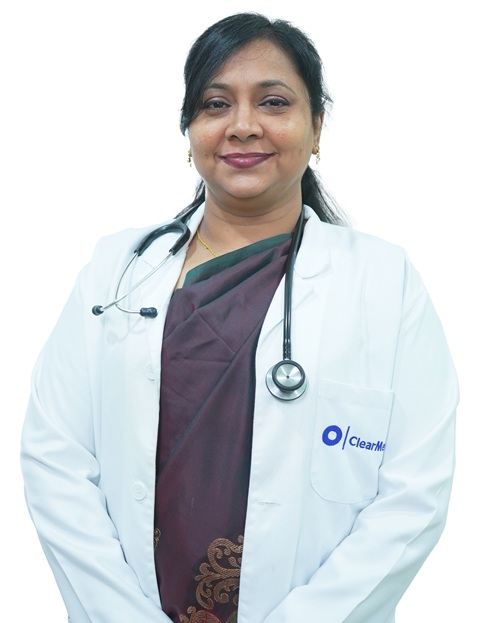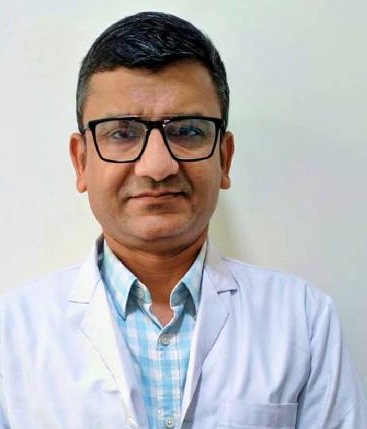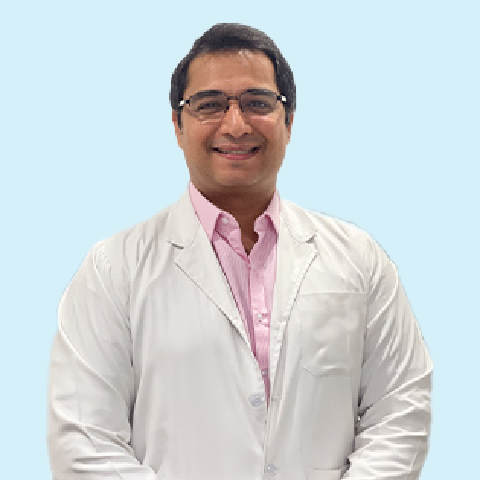What is Sagging Breast? - Causes, Symptoms and Treatment

Quick Summary
Here are three key points about breasts:
- Breasts are made mostly of fat cells, glandular tissue, and ligaments.
- The size, shape, and color of breasts are inherited genetically.
- Age, eating habits, and fitness level can all impact how breasts appear.
The breasts are one of the most important body parts for a woman. While they tend to differ in size, shape, and colour, most of these features are inherited genetically. A woman's breasts constantly change and develop throughout her life.
The breast tissue is made mostly of fat cells, glandular tissue, and ligaments that extend from the collarbone to the underarm and across the centre of the breast. There are glands in breasts called lobules that produce milk in women, which is fed to the newborn child. Age, eating habits and fitness level all tend to impact how breasts appear, which can give rise to saggy breasts.
What Are Sagging Breasts?
It is natural for women's breasts to change their original shape and lose elasticity, and droop with age. Breast ptosis – the medical term for sagging breasts is one of the most common conditions treated by plastic surgeons. While not many might take an interest in enhancing the appearance of their breasts surgically, a few find it life-changing to later their bust condition.
The position of the nipples measures the stage of sagging breasts with the breast fold. There are three stages of sagging breast:
- If the nipple is even with the fold, it's first-degree breast ptosis.
- If the nipple is below the fold, it is second-degree breast ptosis.
- And if the nipple is pointing downward, then it is third-degree breast ptosis.


Sagging Breasts Symptoms
Although breasts, like any other body part, change. If they seem to sit lower on the chest with nipples pointing downwards and the top of the breast does not look as complete as it used to, then the woman is likely to suffer from sagging breasts. Below are some of the most common indicators of sagging breasts:
- Nipples Pointing Downwards
The degree of breast ptosis can be determined by the nipple position. One is likely to have a sagging breast if the nipple is below the breast fold. - Lacking Fullness
Whenever there is an evident change in the volume of the upper part of the breast, it indicates the sagging of breasts. - Lowering of Breasts
The overall lowering of breasts and a shift in their position signify sagging breasts.
Sagging Breasts Causes
Age is one of the most common reasons behind sagging breasts. Irrespective of who the woman is and what she wears, by the mid-30s, a woman's breast starts to lose fatty tissue, reducing size and fullness.
The ligaments and connective tissues in a woman's breast give shape to her breasts and while oestrogen helps maintain its elasticity. With an increase in age, the amount of oestrogen in a woman's body decreases, leading to a negative effect on the elasticity of her skin, resulting in sagging breasts.
However, young women also experience sagging breasts, and there are many factors other than age that may cause sagging breasts. These include:
- If the woman is overweight, the skin and breast tissue may stretch and droop.
- Exposure to the sun's UV rays breaks down collagen and elastin.
- Menopause causes a hormonal change that affects skin elasticity.
- Certain medical conditions like breast cancer and tuberculosis can weaken tissue and support, leading to sagging breasts.
- Multiple pregnancies cause the ligaments that support the breast to stretch and droop as they provide support to the baby.
- Skin loses its flexibility and strength if the person is smoking.
Sagging Breasts Risk Factors
While ageing is inevitable, there are also other factors that put a woman at risk of having sagging breasts. Other risk factors of sagging breasts include:
- Substantial amount of caffeine intake
- Excessive alcohol consumption
- Smoking habits
- Benign tumours
- Pregnancy
- Obesity
Prevention of Sagging Breast
Although sagging breasts is a condition that cannot be eliminated, there are some ways that can either reduce or slow the process of sagging breasts. Lifestyle affects the body, so it's important to maintain a healthy lifestyle. Some of the preventive measures for sagging breasts:
- Get a hormone test
A drop in oestrogen, normally occurring during menopause, may be associated with decreased tissue collagen. Consult a doctor to find healthy ways to boost oestrogen levels which may help improve breast shape and form. - Pregnancy
If a woman prefers her unchanged breast appearance over a family, she should avoid getting pregnant. Studies have shown that the more pregnancies a woman have, the more likely she will experience saggy breasts. - Consistent Weight
Gaining or losing too much weight can stretch the skin past its ability to snap back. Avoid big fluctuations in weight to prevent stretched skin around breasts. - Sagging Breast Bra
The sagging breast bra especially applies to physical activities like jogging. A sports bra that provides support to the breast can reduce breast motion. One study has shown that breast motion during exercise leads to the stretching of breast tissues, which leads to sagging breasts. - Apply Sunscreen
Exposure to the harmful UV rays of the sun can cause damage to the skin. Even if the breasts are not exposed to the sun, the skin around them can get damaged. The surrounding skin helps hold the weight of the breasts, so protecting it will reduce the sagging breasts. - Exercises for Sagging Breasts
A woman's breast has no muscular tissue and is made of soft, glandular tissue. Understanding the sagging breast meaning indicates that the muscles around the breast are not strengthened. Certain exercises for sagging breasts can be done to have toned and firm breasts.
Any exercise that involves the pectoralis major muscle and the pectoralis minor muscle (which lie behind the breasts) will go a long way in preventing sagging breasts. Before doing any exercise, consult a gym instructor or a doctor. Here are some of the exercises to slow or reduce the effects of this condition:
Chest Fly
Push-ups
Dumbbell lateral raise - Balanced Diet
It is no shocker that consuming a healthy and balanced diet with the right kind of nutrients, vitamins, and proteins is the ultimate solution to all problems, whether related to the body or the skin.
Although the diet is not magical, preventing skin from ageing or undoing the effects of gravity, eating a diet rich in antioxidants is good for skin all over the body. Fruits and vegetables are good sources of antioxidants. Drinking fluids will keep the body hydrated, making the skin look better. - Avoid Smoking
Smoking accelerates the ageing process. Tobacco causes the breakdown of collagen and results in tissues losing their firmness. Smoking speeds up ageing by destroying elastin, a protein that helps keep the skin supple. Also, staying away from tobacco will not only improve overall health but reduce the risk of cancer and prevent the risk of the breakdown of skin around the breasts.
How are Sagging Breasts diagnosed?
A general physician or plastic surgeon can diagnose sagging breasts by using a breast ptosis scale to grade the severity of sagging. They will be able to diagnose it by looking at the nipple position in regard to the inframammary crease.
The scale most commonly used to grade breast ptosis is the Regnault Ptosis Scale:
- Mild ptosis (Grade 1): In this case, the nipples are at the same level as the inframammary crease.
- Moderate ptosis (Grade 2): In this case, the nipple is situated below the inframammary crease, but the lower breast tissue hangs below the nipple.
- Advanced ptosis (Grade 3): In this case, the nipple is below the inframammary crease and at the level of maximum breast projection.
- Severe ptosis (Grade 4): In this case, the nipple is situated far below the inframammary crease and at the level of maximum breast projection.
How to prepare for the doctor's consultation?
- Prepare for the doctor consultation in advance: Book an appointment with the doctor beforehand as this will help the patient have extra time to list down the symptoms.
- Explain what the feeling is: The patient should explain all the symptoms to the doctor in a detailed manner. The patient should provide very small details.
- Do not forget to ask questions: The patient should always ask questions about the type of treatments and the possible side effects associated with the treatments. The patient must request the doctor to explain the diagnosis if any diagnostic tests have been recommended.
Sagging Breasts Treatment
It is beyond anyone's feasibility to restore the exact original shape and size of the breast. However, certain measures can improve the breast lift and the overall strength of the bust. Some of the sagging breast treatments are:
Sagging Breasts treatment without surgery
- Support
A quality bra that is right in size gives added support which helps reduce the pain and stress on the breast's supporting tissue and muscles. Use a bra that provides support for sports activities. The bra size may change over time, and it is important to change the bra according to the size. - Posture
Having a bad posture, such as hunched back or bent back, leads to the hanging of the breasts by their weight, putting more pressure and tension on the breast tissue.
Good posture puts the least amount of strain on supporting ligaments and muscles. By keeping a good posture and a straight back, the body's weight is evenly distributed throughout the body and helps prevent sagging.
Sagging Breasts treatment with surgery
- Breast Lift Surgery
This surgical procedure is also commonly known as Mastopexy. This is a very effective surgery to reverse the effects of sagging. In this surgery, the doctor removes the excess skin to bring the sagging breast up. The surgery provides support to the breasts by getting them into the desired shape. - Breast Augmentation
The type of breast augmentation is highly dependent on the woman’s breast size. It is an effective treatment to reduce breast size and treat sagging. In some severe cases where the nipple size is more, one might have to opt for this treatment in combination with lift surgery.
Risks and complications of Sagging Breasts
Sagging breasts are very common problem and if the condition is not treated in time if can lead to health issues. Some of the risks and complications associated with the sagging breasts are:
- Pain and discomfort: pain and discomfort can develop due to the stretching of the of Cooper's ligaments.
- Breast diseases
- Breast cancer
When to see a doctor?
The patient should immediately consult a doctor if the patient is experiencing any of the following signs or symptoms of sagging breasts:
- Point of the nipple down
- There is no fullness in the breasts
- Constant pain and discomfort
Diet for Sagging Breasts
As mentioned above, sagging breasts cannot be fully avoided, but the process can be slowed down to a certain degree. Some of the food items that can tighten the sagging breasts are:
- Lentils
Protein-rich food items like lentils, eggs, and dairy help in the tightening of breasts. - Beans
Beans are loaded with fibre and help prevent sagging breasts after pregnancy and due to growing age by maintaining a healthy tissue generation. - Turmeric
Turmeric helps keep the blood flow healthy and smooth, especially in a woman's breast after breastfeeding. - Plum
Plum has anti-ageing and anti-cancerous antioxidants. These antioxidants help keep blood vessels open and maintain a smooth blood flow. This keeps the bust fuller and firmer. - Seeds and Nuts
Pumpkin seeds, sunflower seeds, flax seeds, and anise seeds help keep the breasts firm as they increase the natural oestrogen level in the body. In addition to seeds, nuts are a strong source of protein and are good for bust. - Cruciferous Vegetables
Vegetables like broccoli, cabbage, and cauliflower have phytoestrogens which act as oestrogen and maintain healthy breasts. And the inclusion of green leafy vegetables in the diet does not even require an explanation. - Fatty Fish
Salmon, sardines, and fatty fish are great sources of omega-3 fatty acids. They help in repairing the harm done by free radicals, making them helpful in lifting saggy breasts. Seafood has also been shown to increase sex hormones, thereby encouraging the development of breast tissue.
Wrapping Up
A sagging breast happens for many reasons – whether it is pregnancy, age or lifestyle but breastfeeding and wearing or not wearing a bra are some of the factors you do not need to worry about. This condition happens to almost every woman and is nothing to be ashamed of.
We at HexaHealth can provide you with the much-needed support to understand the sagging of your breasts in detail. Our expert surgeons can guide you towards effectively slowing down the breasts' sagging. In specific cases, we also offer a seamless surgical experience to help you feel more confident.
Reach out to us with your questions, and our dedicated teams would love to take it forward with you!
Frequently Asked Questions
What are the myths versus facts about sagging breasts?
- Myth: Breastfeeding leads to sagging breasts.
Fact: According to a study, breastfeeding is not the culprit for your saggy breasts. If anything, the pregnancy itself is responsible for this condition. - Myth: Small breasts don't sag.
Fact: Small breasts do indeed sag a little less than big ones, but they are also subject to gravity. If the density of the breast is high, meaning there is more breast tissue compared to fat, then breasts are less likely to droop and vice versa. - Myth: Sagging of the breasts cannot be avoided or delayed.
Fact: While the sagging of the breasts is inevitable and will eventually happen, measures can be taken to slow the process.
Can sagging breasts be firm again?
The size and shape of the breasts can never be the same again, but there are measures to improve the lift and strength like- exercise and diet and nutrition etc. In order to regain firmness, the only solution is plastic surgery.
What is the most common cause of breast sagging?
Ageing leading to hormonal changes, pregnancy, weight gain, or weight loss are some of the common causes of breast sagging.
How do you tighten sagging breasts?
Massaging and exercising the breasts can tighten the muscles around them, giving them a lift.
Does not wearing a bra cause sagging?
This is a complete myth. Wearing a bra or not wearing a bra has no relation to the sagging of breasts.
How can I lift my breasts naturally?
Exercising, having a balanced diet, posture, and providing proper support are some of the natural home remedies to lift breasts.
Will losing weight help sagging breasts?
A drastic weight change may lead to saggy breasts.
When do breasts start sagging?
Naturally, people start experiencing saggy breasts near menopause, i.e. 40-45.
Should you sleep with a bra on?
There is no medical evidence that sleeping with a bra on prevents sagging or without it causes sagging.
How can I make my breast firmer?
Maintaining a healthy weight, wearing a comfortable, well-fitting bra, having a balanced diet, etc., are some things that can help in making breasts firmer.
Do breasts get firm again after breastfeeding?
After breastfeeding, both fatty tissue and connective tissue in the breast may shift. So, the breast may or may not return to pre-breastfeeding shape or size.
Will collagen help saggy breasts?
Breast sagging can be caused by a deficiency of vitamins B and C. Vitamins B and C help in producing elastin and collagen fibre, which help in maintaining firmness in breasts.
How do you lift sagging breasts with natural exercise?
Doing an exercise like bench presses, push-ups, and dumbbell lateral raises can help in lifting sagging breasts.
How can I tighten my breast before marriage?
Doing exercise, eating a balanced diet, quitting smoking, and wearing a supportive and comfortable bra are some of the things that can be done.
What should I do if my breast is loose?
Maintain optimal weight, eat healthily, drink plenty of fluids and, if needed, get plastic surgery.
How to prevent breast sagging?
Apply sunscreen near your breasts, quit smoking, eat a balanced and healthy diet, get a hormonal test done, etc., to prevent sagging.
What is the fastest way to tighten saggy breasts?
Don't smoke or quit smoking; find a comfortable and supportive bra, consider pregnancy carefully, etc., to take care of your saggy breasts.
What foods give you bigger breasts?
Food items like milk, nuts, green vegetables, seafood, seeds, etc., help you in getting bigger breasts.
Which oil is best for breast firming?
Almond oil, olive oil, coconut oil, lavender oil, emu oil, etc., are best for breast firming.
Where should your breast sit?
The breast should sit midway between the shoulder and elbow.
Why does breast size increase after marriage?
Marriage is not responsible for an increase in breast size. The possible explanation for this is pregnancy.
When do breasts stop growing?
Breast development begins between the age of 8 and 13 years and is fully developed by 17 or 18 years.
What is the cost for surgeries to treat sagging breasts?
The cost of surgical treatment methods for sagging breasts is variable, considering the type of hospital chosen, the severity of the condition, the technique recommended, the patient's medical condition based on age and other health factors, etc. Contact HexaHealth for price transparency.
Last Updated on: 17 October 2022
Reviewer

Dr. Priyanka Sharma
MBBS, DNB Plastic Surgery, Training in Hand and Microvascular Surgery, Training in Hair Transplant
15 Years Experience
Dr Priyanka Sharma is a highly regarded Plastic, Reconstructive, and Aesthetic Surgeon with over 15 years of experience.
She is currently associated as a Consultant with:<...View More
Author

Charu Shrivastava
BSc. Biotechnology I MDU and MSc in Medical Biochemistry (HIMSR, Jamia Hamdard)
3 Years Experience
Skilled in brand marketing and SEO-driven medical content that educates and engages patients, healthcare professionals, and the general public. With medical writing and proofreading expertise, she ensures accuracy,...View More
Expert Doctors (10)
NABH Accredited Hospitals (5)
Latest Health Articles
Related Treatments





















 Open In App
Open In App